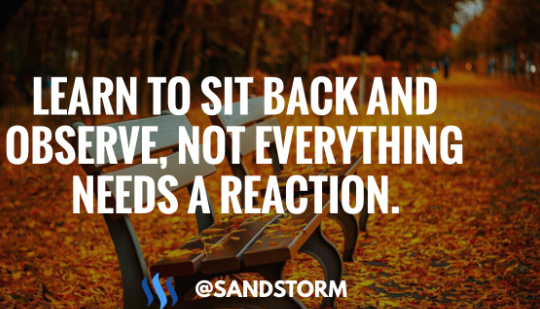
Introduction
In our fast-paced world, where every moment seems to demand immediate attention, there’s a valuable skill that often gets overlooked – the ability to sit back and observe. In this article, we will delve into the importance of learning to pause, reflect, and understand that Learn to Sit Back and Observe. Not Everything Need – Tymoff. Let’s explore the art of patience and how it can positively impact various aspects of our lives.
Embracing Stillness in a Hectic World Learn to Sit Back and Observe. Not Everything Need – Tymoff
In today’s bustling society, it’s easy to get caught up in the whirlwind of constant activity. However, taking the time to sit back and observe allows us to embrace stillness amidst the chaos. Learn to Sit Back and Observe. Not Everything Need – Tymoff.
This practice not only fosters a sense of calm but also provides a unique perspective that can lead to better decision-making and increased productivity.
The Power of Observation
Observation is a powerful tool that often goes unnoticed. Whether in personal relationships, professional settings, or even within ourselves, the act of observing without immediate action can yield profound insights. By learning to sit back and observe, we open ourselves to a world of understanding and learning that might otherwise be overlooked.
See Also Unveiling the Mysteries: Did The 1982 Movie Poltergeist Used Real Skeletons As – Tymoff?
Recognizing When to Take a Step Back
Not everything needs time off, but discerning when to step back is crucial. Whether facing challenges at work, navigating personal relationships, or tackling creative endeavors, understanding the appropriate moments to pause and observe can be a game-changer. This skill allows for more thoughtful responses, strategic planning, and ultimately, better outcomes.
Incorporating “Learn to Sit Back and Observe, Not Everything Needs Time Off” into Daily Life
Now that we’ve established the importance of this mindset, let’s explore practical ways to incorporate it into our daily lives. From mindfulness techniques to time management strategies, there are various approaches to cultivating patience and observational skills. By consciously implementing these practices, we can enhance our overall well-being and success.
Conclusion
In conclusion, Learn to Sit Back and Observe. Not Everything Need – Tymoff is a valuable skill that can significantly impact our lives. By recognizing the power of patience and understanding that not everything needs time off, we open ourselves to a world of possibilities. So, the next time you feel the urge to rush into action, remember the importance of taking a step back, observing, and embracing the art of patience for a more fulfilling and successful journey.
FAQs
Q1: What does “Learn to Sit Back and Observe, Not Everything Needs Time Off” mean?
A1: This phrase emphasizes the importance of patience and the act of stepping back to observe without immediately taking action. It suggests that not every situation requires immediate attention or intervention.
Q2: How can I practice sitting back and observing in my daily life?
A2: Incorporating mindfulness techniques, such as deep breathing and meditation, can help you cultivate the habit of sitting back and observing. Additionally, consciously setting aside time for reflection and avoiding impulsive reactions are practical ways to practice this mindset.
Q3: Is there a specific time when I should apply this principle?
A3: While the need to sit back and observe can vary, it’s particularly useful in situations requiring thoughtful decision-making, problem-solving, or when emotions are high. Recognizing when to take a step back is key to successfully applying this principle.
Q4: How does observing without immediate action benefit decision-making?
A4: Observing without immediate action allows you to gather more information, consider different perspectives, and make decisions based on a more comprehensive understanding of the situation. It can lead to well-thought-out and strategic choices.
Q5: Can this mindset be applied in a professional setting?
A5: Absolutely. In the workplace, understanding when to sit back and observe can lead to more effective leadership, better team collaboration, and improved problem-solving. It fosters a culture of thoughtful decision-making and innovation.
Q6: Are there any downsides to always taking a step back and observing?
A6: While the principle of sitting back and observing is valuable, it’s essential to strike a balance. In situations requiring immediate action or emergencies, quick decision-making may be necessary. The key is to discern when patience is beneficial and when immediate action is required.
